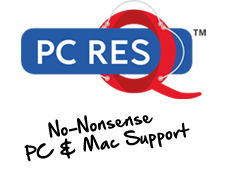I do like a bargain.
And who doesn’t; especially when you can get your hands on a lovely watch at a reduced price.
Around 99% less than retail to be exact.
This was my experience during my backpacking years in Bali where they try and flog you anything but the kitchen sink during your walkabout.
I do have a bit of a weakness when it comes to watches and when I was presented with a sparkling Breitling watch at a ridiculously low price, I snapped it up it no time.
It was obviously a fake, but to my professionally trained eye, I really couldn’t tell.
We love to buy but don’t like being sold to, but what really hurts is when you buy something which you thought was genuine and turned out to be anything but.
The internet is swamped with fake items, and since 2014 the Police have shut down 28,000 websites selling counterfeit goods to British consumers. More than 4,000 were set up using identities stolen from customers.
Identity fraud is rising to “epidemic levels” with 86% of identity fraud being carried out online.
Checking products online for their authenticity can be difficult as the websites use real images which means that fraudsters can easily con online shoppers.
Knowing that my Breitling was a fake had no consequences but there’s more at stake when it’s a fake when shopping online. Buying from a dodgy site puts your personal and financial information at great risk, meaning that criminals can use your identity for malicious means.
So how do you reduce the risk of this happening to you? Here’s my 6 warning signs in helping you spot a fake, fraudulent or scam website.
THE PRICE
When something’s too good to be true, it more than likely is. Saving £15 on a laptop power charger from a fake site might make you feel good at the time but not much consolation if it ends up in flames from defective parts.
REVIEWS
An indication of a dodgy site can be if all the reviews published are of a recent date or the wording in all the reviews looks to be of a similar style. Never trust the reviews on the website itself either; check third party websites such as Trustpilot, Feefo and Sitejabber. Also check the company’s social media webpage for comments and reviews.
SAY NO TO BANK TRANSFER
Always use a credit or debit card when paying for goods online as you’ll be eligible for a refund if it turns out to be a fake. Paying by bank transfer won’t give you any protection whatsoever, so don’t do it.
CHECK THE DOMAIN
Fake sites will have created their own domain which looks very similar to the real thing. So something like www.iphonedeals.com or www.ipadiscounts.com should be given a wide berth.
STANDARD INFORMATION
If it’s a genuine company website, they’ll have a returns policy explaining how you can return a faulty item, a Terms & Conditions section detailing your rights and a Contact us area showing their physical address and contact details.
GRAMMAR
If a website has very poor grammar or spelling mistakes, this is a clear sign of a fake website that’s been published online very quickly by someone abroad to make a quick profit.
If ANY of the above applies, the website WILL be fake.
Buy safely.





